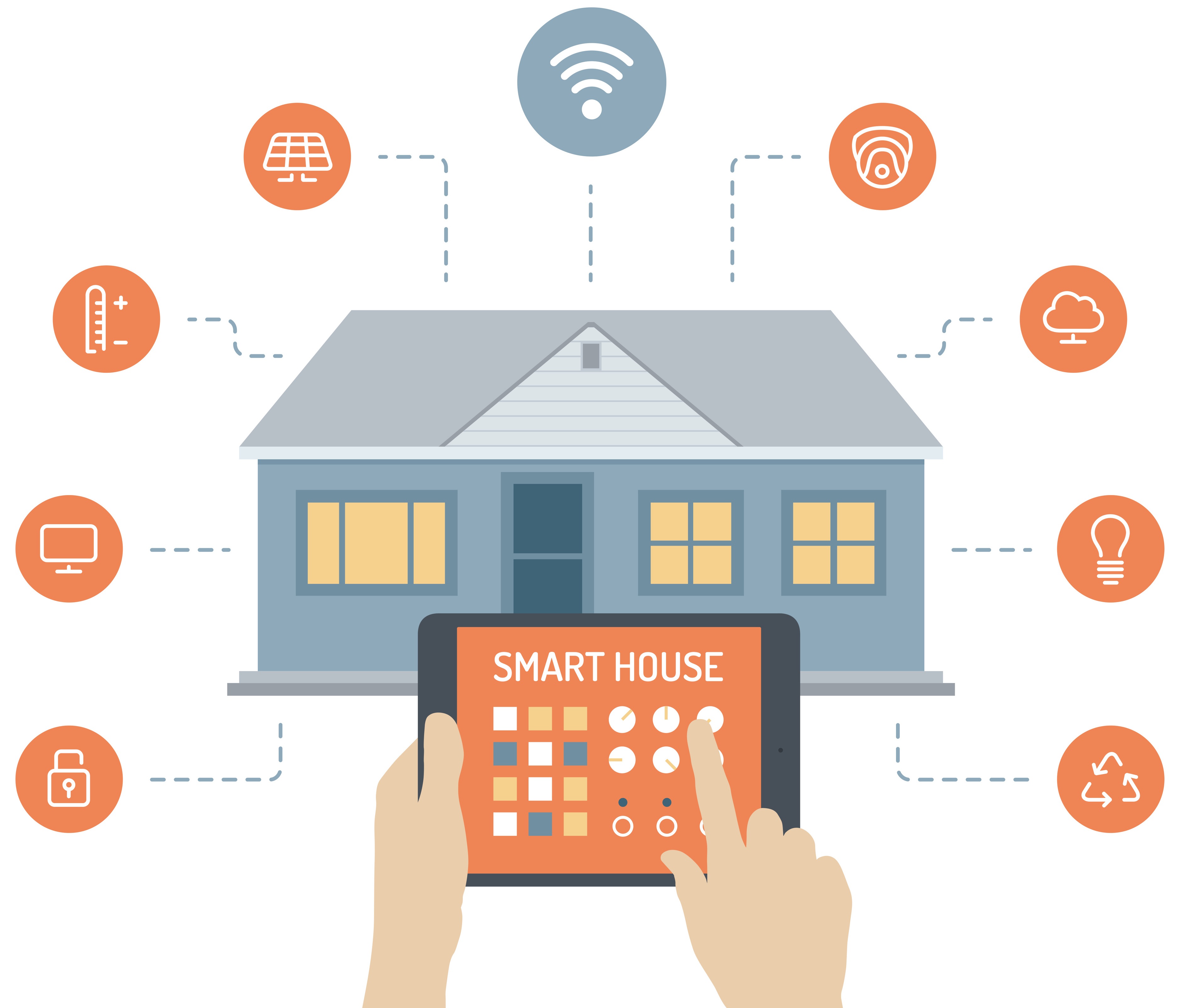
Flat design style modern vector illustration concept of smart house technology system with centralized control of lighting, heating, ventilation and air conditioning, security locks and video surveillance, energy savings and efficiency. Isolated on white background.
Whether you want automatic doors and windows or color-changing lights that can be controlled by your phone, turning your home into a technologically advanced smart home can be an intimidating venture. Today’s market contains hundreds, if not thousands, of internet-connected devices that can all be controlled by separate means. Smartphones, touch sensors, and voice activation all require different conditions to work and work well. So where do you start to upgrade your home?
Start Simple: Basic Upgrades to Everyday Items
Before going overboard and picking up the latest in tech gear like Bluetooth-enabled cutlery, look for items in your home that you use every day that can be automated. Devices such as your thermostat, lights, and security systems can all be automated with little effort on your part, while often giving you more functionality than when you started.
Intuitive Temperature Control
The third-generation Nest Learning Thermostat is a device that stands out from the rest of its competitors. Within a week of use, this smart little device will program itself to suit your preferred temperature, meaning you don’t have to get up and change the dial every time. The capabilities extend beyond learning your preferred temperatures; the Nest thermostat also learns your schedule and adjusts itself accordingly. Using your phone’s location, it recognizes when you are out of the house and puts itself in an “eco-friendly” mode to save energy.
Home Security Made Simple
Home security systems like the iSmartAlarm are essential in homes that utilize smart devices. With motion detection, contact sensors, and the option to add cameras all around your home, the iSmartAlarm ensures you are covered in every room wherever you are. Even at the office, you can monitor the activity that goes on within your home, and are immediately alerted to unusual activity and unauthorized access via SMS and email. Easy to install, with no monthly fees or contracts, make this alarm a good choice for a cost-effective security system.
Add a Splash of Color
Personalize any room with colored LED light bulbs, such as the LIFX Color 1000 lightbulb. Increase productivity or herald relaxation with multiple hues that fit your mood. While the light bulbs themselves can start out expensive, you won’t need to replace them very often. The lifespan of these lights is quoted at being over 20 years, with a yearly energy cost of $1.32 per bulb.
Windows and Locks That Work for You
Opening blinds, closing doors, and manually locking up your home are daily tasks that you may not even think about automating, but they are some of the easiest processes to install and control within your home. Blinds that open up when the sun comes out or locks that don’t need a key to enter are subtle touches that make a big difference.
Self-Raising Blinds
If you struggle with getting out of bed in the morning, wake up to a loud alarm, or prefer to wake up naturally, then you may choose to automate your blinds with FlipFlic. FlipFlic is a simple, solar-powered device that automatically opens your blinds for you based on your preferences. You can also use the smartphone app to adjust the level manually without standing up from your chair. This device manages your blinds when you are away, opening and shutting blinds to simulate activity in the home, keeping you safe.
Smart Locks Give You Control
The August Smart Lock is a lock that works with your preexisting hardware, meaning less time and energy spent on installation. Your smartphone becomes your key, locking and unlocking your door without the need to dig in your purse. Giving virtual keys to your family enables you to keep tabs on who is entering and leaving your home. With the addition of guest keys, you can also decide how long a guest may have access to your home, from a few minutes to several weeks.
Control Your Home
There are many different options for controlling your smart home, from voice commands to touch control. With so many choices on the market from numerous trusted brands, you have options that help you adjust your automated life from anywhere you are.
Amazon Alexa
Control your smart devices with Amazon’s Alexa. Alexa serves as a link between you and your devices using intuitive voice activation, meaning you can give it simple commands and it will perform them to the best of its ability. Not all devices are compatible with Alexa’s voice service, so ensure that they are before purchasing the product.
Vivint
Vivint Smart Home offers packages bundling all of your smart devices, enabling you to control everything from one place without going to seven different applications. Simply put Vivint’s App on your smartphone, add your devices, and watch as your home comes together under one convenient remote control. Vivint also works with Google Home for added functionality.
By Cary Teller


